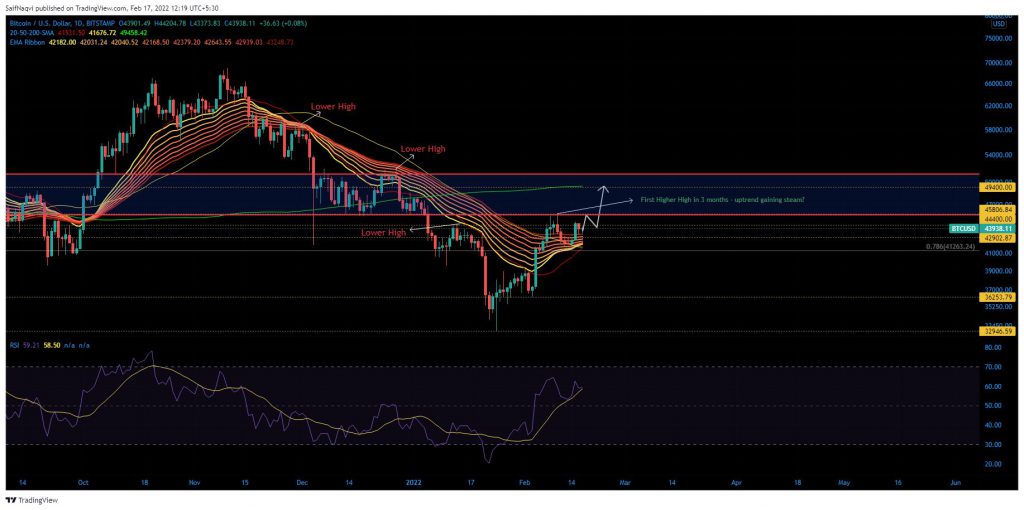Bitcoin is well-positioned for another dig at $46K as it tries to solidify its uptrend above a major resistance area. The key breakout would set the king coin onwards to $49K, from where the daily 200-SMA (green) would come in the picture. At the time of writing, BTC traded at $43,946, down by 0.6% over the last 24 hours.
Bitcoin Daily Chart


Bitcoin’s peak at $45,850 on 10 February was a much-needed development on the chart. The local high created was BTC’s first higher high in 3 months after a troubling downtrend dominated the market since November 2021. With a potential crossover between the 20-SMA (red) and 50-SMA (yellow) lending support, BTC eyed a move above its previous swing high to establish a new uptrend regime.
The weekend would likely be a crucial period of BTC as it attempts to generate momentum above $45,850. A breakout would set its price on course to $48K, as more longs get behind BTC’s first ascent above $46K in six weeks. Arguably, the final hurdle lay at the 200-SMA (green) close to $49,400. A move past the long-term moving average would assert BTC’s uptrend and shift the market heavily in favor of the bullish side.
The daily EMA Ribbons flipped bullish on 7 February and currently moved below the candlesticks, offering support to BTC’s advance. Another interesting observation was made after the ribbons began to contract, suggesting that bearish pressure had reduced over the past week. Furthermore, the daily RSI traded in the bullish ground and there were no immediate obstacles until the overbought territory is breached.
However, a bearish threat was not absent. A double top rejection at $46K could create panic, especially if the resulting correction drags BTC below the $42K mark. Not only would BTC’s bullish bias be lost but the market would open up for deeper losses next week.
Conclusion
Bitcoin was expected to challenge the all-important $46K area over the weekend, helped by the short-mid term SMA’s and favorable indicators. An altcoin rally may also feature on the weekend if BTC is able to get past its overhead resistance.





